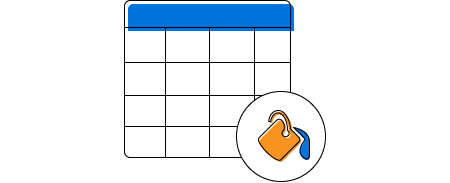
Angular Card is a container-based user interface (UI) component built using HTML5/CSS3 markup and styles for displaying organized content. The Card design is widely used in social media and e-commerce sites such as Facebook, Google Now, Amazon, Pinterest, and more. The cards are mostly used as entry points to more detailed views, such as in a gallery or dashboard.
Cards consist of various UI elements, including headers, sub-headers, images, multimedia, action buttons,and dividers.
Construct various Card designs such as business cards, weather cards, graph cards, avatar cards, flip cards, stacked cards, reveal cards, swipe cards. Because it is a fully customizable container, you can manipulate it into whatever you like.

Angular Card component offers much flexibility, allowing it to easily adapt to almost all touch devices.
The entire Card UI can be set up as a clickable action item, or specific action buttons can be added to cards.

Different collections of cards, such as a tile view, can be generated with the help of defined HTML templates to simplify rendering in a web application.
Users can easily integrate other Angular UI components inside the cards to create avatar cards, graph cards, and more.

Manually customize the look and feel of your Card image title to meet your needs.
Angular Cards component provides a rich set of built-in themes. It can be used to modify the control’s appearance based on user preference.
Angular Cards component has several built-in themes such as Material, Bootstrap, Fabric (Office 365), and high contrast. Users can customize any of these built-in themes, or create new ones to build their own desired look and feel, either by simply overriding Sass variables or using our Theme Studio application.

Easily get started with the Angular Card component using a few simple lines of HTML and TSX code as demonstrated below. Also explore our Angular Card Example that shows you how to render and configure the Card in Angular.
- <div class = "e-card">
- Sample Card
- </div>
- import { Component, ViewChild } from '@angular/core';
-
- @Component({
- selector: 'app-container',
- template: `
- <div tabindex="0" class="e-card" id="basic">
- <div class="e-card-header">
- <div class="e-card-header-caption">
- <div class="e-card-title">Advanced UWP</div>
- </div>
- </div>
- <div class="e-card-content">
- Communicating with Windows 10 and Other Apps, the second in a five-part series written by Succinctly series
- author Matteo Pagani. To download the complete white paper, and other papers in the series, visit
- the White Paper section of Syncfusion’s Technology Resource Portal.
- </div>
- </div>
- `
- })
-
- export class AppComponent {
- @ViewChild('element') element;
-
- }
Card is also available in Blazor, React, Vue, and JavaScript frameworks. Check out the different Card platforms from the links below,
With continuous improvement in Angular versions, the Angular Card is kept up to date to make it compatible with the latest version.
The Syncfusion Angular Card control supports the following features:
We do not sell the Angular Card separately. It is only available for purchase as part of the Syncfusion team license. This contains over 1,900 components and frameworks, including the Angular Card. The price of the team license starts at $395 per month for 5 developers, and includes support and updates until the subscription expires. In addition, we might offer discounts based on currently active promotions. Please contact our product specialists today to see if you qualify for any additional discounts.
You can find our Angular Card demo here.
No, our 1,900+ components and frameworks for web, mobile, and desktop, including our Angular Card, are not sold individually. They are only available as part of a team license. However, we have competitively priced the product, so it only costs a little bit more than what some other vendors charge for their Card component alone. We have also found that, in our experience, our customers usually start off using one of our products and then expand to several products quickly, so we felt it was best to offer all 1,900+ components and frameworks for a subscription fee that starts at $395 per month for a team of 5 developers. Additionally, we might be able to offer discounts based on currently active promotions. Please contact our product specialists today to see if you qualify for any additional discounts.
No, this is a commercial product and requires a paid license. However, a free community license is also available for companies and individuals whose organizations have less than $1 million USD in annual gross revenue, 5 or fewer developers, and 10 or fewer total employees.
A good place to start would be our comprehensive getting started documentation.
 Documentation
Documentation
Greatness—it’s one thing to say you have it, but it means more when others recognize it. Syncfusion® is proud to hold the following industry awards.